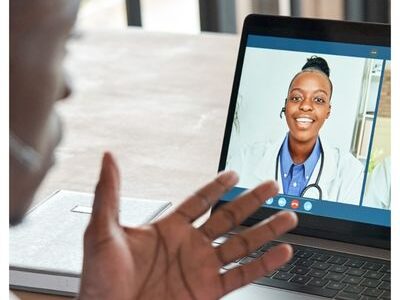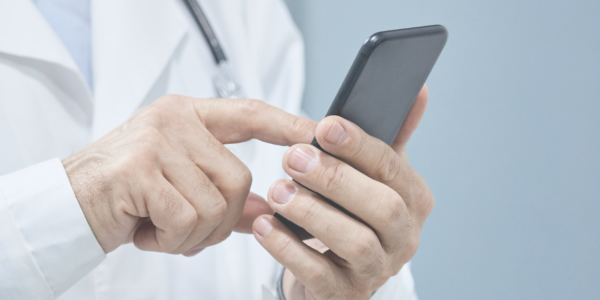From our partners at Svast:
As we are all aware, the Centers for Medicare and medicaid Services (CMS) has continued to release telehealth coding changes that impact billing in reponse to care providers’ concerns amidst the novel coronavirus pandemic.
Here are the most recent changes that impact billing, which went into effect on May 1, 2020. In Particular, the 46 new telehealth coding changes fall under the following commonly used categories:
- Telephone calls
- Audiology services
- Behavioral health
- Other therapy services
Additionally, CMS statements note that when it comes to telehealth services, they will consider “adding new telehealth services on a sub-regulatory basis” as providers request new services they can potentially perform via telehealth. For a complete list, visit CMS Telehealth Covered Services.
Audio-only provisions
After providers voiced concerns in using real-time audio with video technology for some patients in the Medicare population, CMS implemented telehealth coding changes that now allow some services to be performed using only the telephone, eliminating the formerly required video component.
For more information, you can look at the Complete CMS Telehealth Covered Services list (and in particular, the “Can audio-only interaction meet the requirements” section in column D). Still, in general, most codes are from the following categories:
- Telephone calls
- Prolonged services
- Various G codes for telehealth consults and counseling
- Behavioral health
As before, medical necessity is the overarching criterion for each visit, and the integrity of the visit, clinical relevance, intent, and documentation requirements remain the same, as well.
Telephone only E/M services higher payment
After considering that these services would otherwise have been reported as in-person or telehealth visits, Medicare is increasing the payment schedule for the Telephone E/M codes 99441-99443, from wRVU of 0.25, 0.5, 0.75, respectively, to 0.48, 0.97, and 1.5 respectively. (Keep in mind that codes 99201-99215 still require real-time audio and video, and cannot be billed for telephone only E/M.)
Time clarification for telehealth E/M services
For all claims or or after March 1, 2020, Medicare will recognize the standard time codes 99201-99215 as listed in the CPT (previously they used a different standard of time) to help eliminate some confusion.
Changes in non-physician practitioner utilization
Similarly, although supervision of diagnostic testing was formerly allowed only by physicians, Medicare is changing the way certain NPPs can be utilized, giving them greater flexibility within their scope of practice (as designated by applicable state law). Nurse practitioners, clinical nurse specialists, and physician assistants can now supervise diagnostic tests as well as provide the following home health services.
- Ordering home health services
- Establishing and/or reviewing the Plan of Care for Medicare beneficiaries
- Certifying and recertifying patient eligibility for home health services
Telehealth services for therapeutic services
Physical therapists, occupational therapists, and speech-language pathologists can now perform and bill telehealth services to Medicare. This is vital given how therapy is an area that has been greatly affected by the current pandemic, and this step allows Medicare patients to receive and/or renew a treatment plan.
COVID-19 testing no longer requires a physician order
This may prove especially important if you choose to require patients to have a negative COVID-19 test before providing inpatient care; Medicare no longer requires a physician order from a treating physician for beneficiaries to have a COVID-19 test. Similarly, Medicare will also now cover “certain serology (antibody) tests” to see if patient have developed an immune response. The April 20, 2020 press release may off a more in-depth explanation.
Additionally, if you missed it earlier, Medicare is waibing all patient cost-share for COVID-19 testing and any COVID-19 related teleheath visits )in which testing is ordered or performed). This change does not include virtual check-in visits (which will continue to be paid 80/20, with a 20% patient cost share), but does apply to approved outpatient telehealth visits, hospital telehealth visits, and digital online E/M. For claims at 100% of the Medicare allowed fee schedule, use the modifier CS on the claim line item, remembering to document both clinical relevance as well as where the test has been or will be performed.
Similarly, Medicare is allowing providers to waive the patient’s cost-share (deductible and/or coinsurance) for all other Medicare-approved telehealth services. Many payors are waiving cost-sharing for telemedicine visits; Payor Telehealth Policies can offer more information.
Codes for covered telehealth services
As part of the coronavirus pandemic response, CMS has temporarily relaxed many of the regulations around providing telehealth care for patients, including adding over 80 codes. While the CMS website can offer a complete listing, the following are the newly added categories that may be pertinent to surgical practices:
- 99281-99285 Emergency Departments Visits
- 99218-99220 Initial Observation, 99224-99226 Subsequent Observation, 99217 Observation Discharge Day Management, and 99234-99236 Same Day Observation
- 99221-99223 Initial hospital care and 99238-99239 Hospital discharge say management
- 99291-99292 Critical Care Services
- 99468-99476 Inpatient Neonatal and Pediatrics Critical Care Initial and Subsequent
- 99477-99478 Neonatal/Low Birth Weight Initial and Continuing Intensive Care Services
- 97161-97168; 97110, 97112, 97116, 97535, 97750, 97755, 97760, 97761, 92521-92524, 92507 Therapy Services, Physical and Occupational Therapy
Place of Service (POS) changes on Medicare claims
Whereas you might have historically used POS 02 for all CMS telehealth and telephone services, effective March 1, 2020, and through the COVID-19 pandemic public health emergency, use the place of service where the provider would typically have performed the visit if the patient had been seen face-to-face (POS 11 or 22, for instance, if normally seen in your private practice office or in a provider-based clinic, respectively).
Similarly, append modifier 95 (for synchronous telemedicine service rendered via a real-time interactive audio and video telecommunications system) for all telehealth Medicare claims, as that allows medicare to pay these visits at the higher non-facility fee schedule rate. (Commercial payors may have different guidelines, so check with your respective payors as needed.)
Choosing your outpatient/office E/M code – use either MDM or time
The updated guidelines also note that E/M code for the the telehealth visit (real-time audio and video) may be chosen based on medical decision making (using the existing guidelines, not the new 2021 guidelines or the total amount of time. This is especially good news for practioners who may otherwise normally need to choose a lower level E/M code because the examination component was not met. Just be sure to have good documentation of the MDM or time, whichever you choose to use to determine the billed E/M code.
Using the patient’s home as POS
Medicare is now allowing the patient’s home as an approved site of service; there are no site or geographical limitations for the patient or the provider for telehealth visits. However, you will not use POS 12 (home) on your claim. Instead, if the provider is furnishing the telehealth services from their own home, list the provider’s home address in box 32 (service location) on the claim and then use the POS code you would normally use when seeing the patient (POS 11 or POS 22, for instance).
Telephone only service update
Telephone only E/M visits are now approved for both new and established patients, including codes 99441-99443 and 98966-98968. While SPT states these codes are for established patients only, Medicare is now allowing telephone only E/M codes for new patients as well. Physicians and NPPs that bill under their own NPS should use codes 99441-99443, while “qualified non-physician health care professionals” should use codes 98966-98968. CMS also requires therapists to use the appropriate therapy modifier (GO, GP, GN) for their services.
Consents
Medicare now also says that annual patient consent does not have to be obtained before the initial telehealth visit; consent should not interfere with patient care, and can be obtained during or after the visit as necessary.
Virtual check-ins and e-visits
For both new and established patients, Medicare will now cover both virtual check-ins (G2010-G3012) and e-visits (G2061-G2063), and they can be billed by LCSWs, PTs, OTs, and SLPs if needed. As before, CMS requires that therapists use the appropriate therapy modifier (GO, GP, GN) for their services.
Physician supervision changes
CMS has also temporarily modified the definition of direct physician supervision to include virtual supervision. The provision requires the physician use real-time audio with video while supervising.
Frequency limitation changes
There are now no frequency limitations on the following:
- Subsequent inpatient visit (99231-99233) no longer limited to once every 3 days
- Subsequent skilled nursing visit (99307-99310) no longer limited to once every 30 days
- Critical care consult codes (G0508-G0509) no longer limited to once per day
Conclusion
“By allowing more telehealth services through these new codes, Medicare patients have additional flexibility and choice in their health care services while having more accessibility to needed care”.



